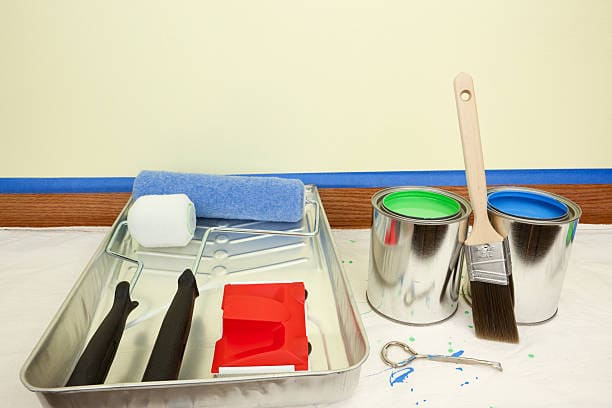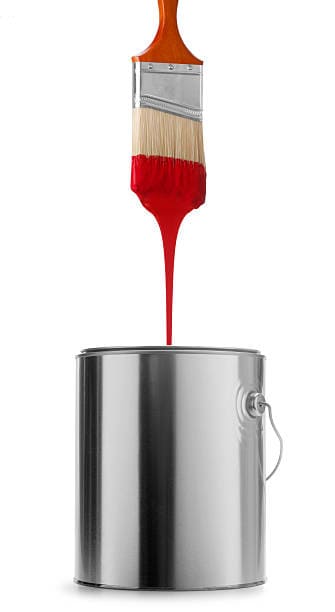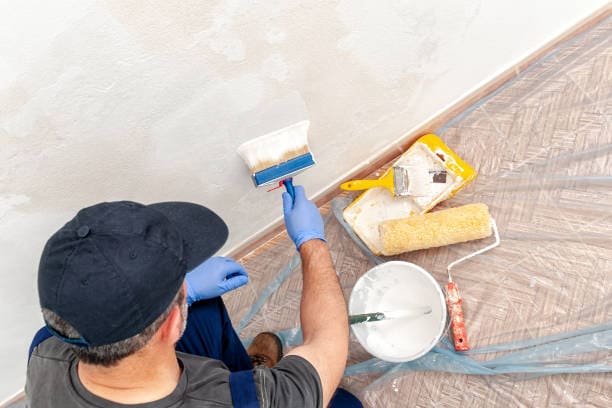Whether you’re a professional painter or just trying to paint your bedroom, brush marks can be considerably annoying. They can ruin the appearance of your finished product and take away from the overall effect. This guide will teach you how to avoid brush marks when painting! We’ll give you tips and tricks to help you achieve a smooth, flawless finish every time. And what should we pay attention to when painting

How to avoid brush marks when painting
1, To paint the places, use sandpaper to sand and wipe with a slightly damp rag.
This will help to remove any dirt that may be on the surface.
Start by painting the edges and corners first. Use a brush with synthetic bristles for this task. Natural bristle paint brushes tend to absorb more paint and can leave behind brush marks.
Use even sweeping strokes when painting. Avoid going over the same area multiple times, as this can cause brush marks.
If you do notice any brush marks, don’t panic! Let the paint dry, and lightly sand the area with fine-grit sandpaper. Once you’ve achieved a smooth finish, repaint the area and enjoy your beautiful, brush-mark-free painting!
2, with a brush with a small amount of paint applied to the construction surface.

When it comes to painting, less is more. Overloading your brush with paint will make it harder to avoid brush marks. Instead, dip your brush into the paint and lightly tap off any excess. This will help you achieve a nice, even coat of paint that is less likely to leave behind unsightly brush marks.
3, Brush the paint from bottom to top and make sure the paint is applied evenly.

If you’re painting a wall, start at the bottom and work your way up. This will help ensure the paint is applied evenly and avoid drips or runs. When you reach the top of the wall, brush over any areas that may have been missed.
4, After painting, place it in a cool place and wait for it to dry.
Once you’ve finished painting, it’s essential to let the paint dry completely before moving on to the next step. This will help to avoid any smudging or brush marks. Place your painting in a cool, dry place and wait for it to dry completely before adding any final touches.
Professional painters have a few tricks up their sleeves when avoiding brush marks.

One tip is to use a paint roller instead of a paintbrush whenever possible for significant places. This will help to distribute the paint and avoid leaving streaks or lines evenly.
Another tip is to thin the paint before applying it to the surface. This can be done by adding water or paint thinner to the paint. Be sure to follow the manufacturer’s instructions when doing this.
Finally, always start painting at the bottom and work your way up. This will help to avoid any drips or runs.
Following these tips, you can avoid brush marks when painting and achieve a smooth, flawless finish every time! Remember to practice and have patience; you’ll be a pro in no time!
Brush mark removal tips if they still occur despite your best efforts
If you still end up with brush marks despite your best efforts, don’t despair! There are a few things you can do to remove them.
One option is to sand the surface smoothly. This will require some elbow grease, but it’s worth it for a flawless finish.
Another option is to use a paint stripper. This will remove the paint and any brush marks along with it. Be sure to follow the manufacturer’s instructions when using a paint stripper.
what to pay attention to when painting

1, indoor use of paint, preferably high-quality, so that the presence of harmful substances will be less, to bring greater assurance of the health of home members. If some small brand merchants produce the paint, we should pay attention to see whether its quality is good or bad, open whether there is a pungent smell emitted.
2, in the process of painting, is to pay attention to the humidity in the air. If the humidity in the air is relatively large, it will take longer for the paint to dry, which will seriously affect the quality of the painting. If it is too dry, it will lead to the phenomenon of cracking, bringing unnecessary trouble.
3, the choice of paint colour is also critical. If individuals prefer a darker environment, the colour chosen must be dark. Before painting, they do not need to dilute to avoid colour differences, and the overall effect is better.
Do you have any tips or tricks for avoiding brush marks when painting? Could you share your ideas with us? And if you found this article helpful, be sure to share it with your friends!
Happy painting!
